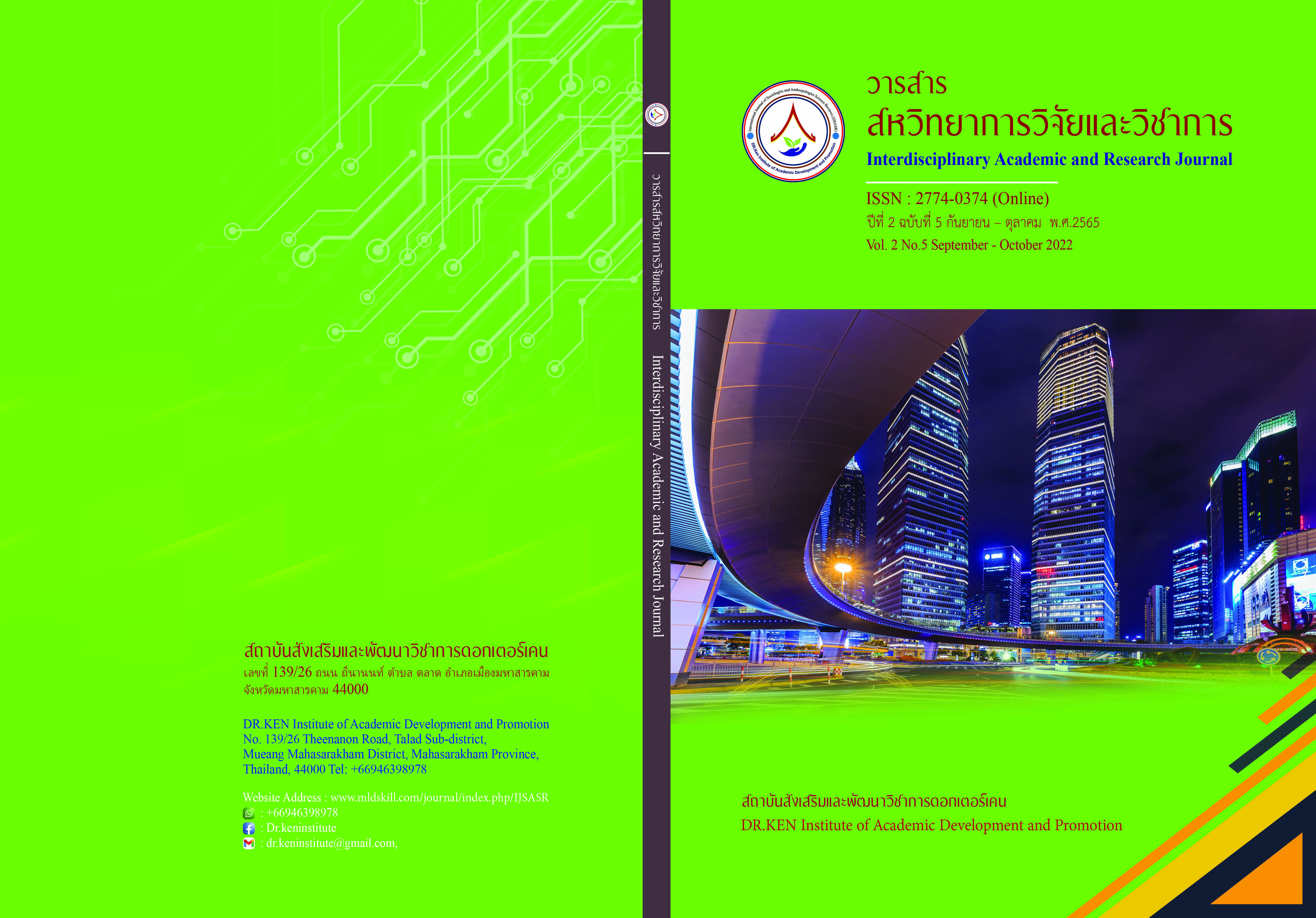Legal Measures for Textbook Copyright Protection
DOI:
https://doi.org/10.14456/iarj.2022.124Keywords:
Copyright; , Book; , Legal MeasuresAbstract
The current situation has adopted modern technology to help produce, copy and distribute various works more conveniently and quickly. At the same time, non-copyrighters use those technologies to reproduce and distribute copyrighted works as well. Especially in the case of students or professors who have brought textbooks to make copies of documents by themselves or taken them to a copy shop to do so for use in teaching, which is a reproduction of copyrighted work. Thus, this research aims 1. to study the background, concepts, theories, laws, and measures related to textbook copyright protection; 2. to comparatively study the exemption of textbook copyright infringement; and 3. to purpose the appropriate measures for textbook copyright protection. This current study employed a qualitative research method in which secondary data were collected through the related document from various sources both from Thai and foreign countries. According to this research, it is found that 1) textbook copyright protection under the Copyright Act, B.E. 2537 is automatically activated. No registration is required; 2) in terms of copyright infringement exemption, there are loosely stated principles with no precise measure; and 3) since the current enforced measures for textbook copyright protection have no specified proportion or volume of creative work for Fair Use, therefore the researcher would suggest that the Department of Intellectual Property (DIP) issue ministerial regulations or notification of the ministry outline the principles relating to proportion or volume of creative work for Fair Use. In addition, higher educational institutions should issue regulations or notifications requiring faculties as textbook authors to register to verify the ownership of the copyright and be eligible for further assistance from the institution.
References
ไชยยศ เหมะรัชตะ. (2562). ลักษณะของกฎหมายทรัพย์สินทางปัญญา. พิมพ์ครั้งที่ 12. กรุงเทพฯ : นิติธรรม.
กรมทรัพย์สินทางปัญญา. (2559). กฎหมายลิขสิทธิ์ สหรัฐอเมริกา. [Online] https://www.ipthailand.go.th/th/ กฎหมายลิขสิทธิ์ สหรัฐอเมริกา (ipthailand.go.th) [4 กุมภาพันธ์ 2565]
กรมทรัพย์สินทางปัญญา. (2559). กฎหมายลิขสิทธิ์ ออสเตรเลีย. [Online] https://www.ipthailand.go.th/th/ กฎหมายลิขสิทธิ์ ออสเตรเลีย (ipthailand.go.th) [4 กุมภาพันธ์ 2565]
กรมทรัพย์สินทางปัญญา. (2559). กฎหมายลิขสิทธิ์ อังกฤษ. [Online] https://www.ipthailand.go.th/th/ กฎหมายลิขสิทธิ์ อังกฤษ (ipthailand.go.th) [4 กุมภาพันธ์ 2565]
กรมทรัพย์สินทางปัญญา. (2559). กฎหมายลิขสิทธิ์ ฮ่องกง. [Online] https://www.ipthailand.go.th/th/ กฎหมายลิขสิทธิ์ ฮ่องกง (ipthailand.go.th) [4 กุมภาพันธ์ 2565]
ณัฐกิตติ์ ศิริพงศ์ธาริน. (2559). การขายสิทธิการแปลของสำนักพิมพ์ไทยออกต่างประเทศ. การศึกษาอิสระสาขาการบริหารสื่อสารมวลชน. มหาวิทยาลัยธรรมศาสตร์.
บุญณิศากร เมฆฉาย. (2548). การใช้ลิขสิทธิ์โดยชอบธรรมกับงานบริการวิชาการของบรรณารักษ์ห้องสมุด. รายงานวิจัยมหาวิทยาลัยรามคำแหง.
พวงรัตน์ อัศวพิศิษฐ์. (2557). คดีดังที่กูเกิลถูกฟ้องฐานไปสแกนหนังสือกว่า 200 ล้านเล่ม. TCIJ ทำความ จริงให้ปรากฏ. [Online] https://www.tcijthai.com/news/2014/06/archived/3949. [2 พฤษภาคม 2564]
อรพรรณ พนัสพัฒนา. (2557). คำอธิบายกฎหมายลิขสิทธิ์. พิมพ์ครั้งที่ 6. กรุงเทพฯ : นิติธรรม.
อำนาจ เนตยสุภา, และชาญชัย อารีวิทยาเลิศ. (2558). คำอธิบายกฎหมายลิขสิทธิ์. พิมพ์ครั้งที่ 2. กรุงเทพมหานคร : วิญญูชน.
Picciotto, Salomone. (2002). Copyright licensing: the case of higher education photocopying in the UK. European Intellectual Property Review, 24(9), 438-447.
U.S. Copyright Office Fair Use Index. (2022). Princeton University Press V. Michigan Document Services Inc [1996]. [Online] https://caselaw.findlaw.com/us-6th-circuit/1059114.html [10 January 2022]
Downloads
Published
How to Cite
Issue
Section
License
Copyright (c) 2022 สุวนัย ทะคำสอน, ดุจตะวัน อินศร

This work is licensed under a Creative Commons Attribution-NonCommercial-NoDerivatives 4.0 International License.
Copyright on any article in the Interdisciplinary Academic and Research Journal is retained by the author(s) under the under the Creative Commons Attribution-NonCommercial-NoDerivatives 4.0 International License. Permission to use text, content, images, etc. of publication. Any user to read, download, copy, distribute, print, search, or link to the full texts of articles, crawl them for indexing, pass them as data to software, or use them for any other lawful purpose. But do not use it for commercial use or with the intent to benefit any business.
















.png)


